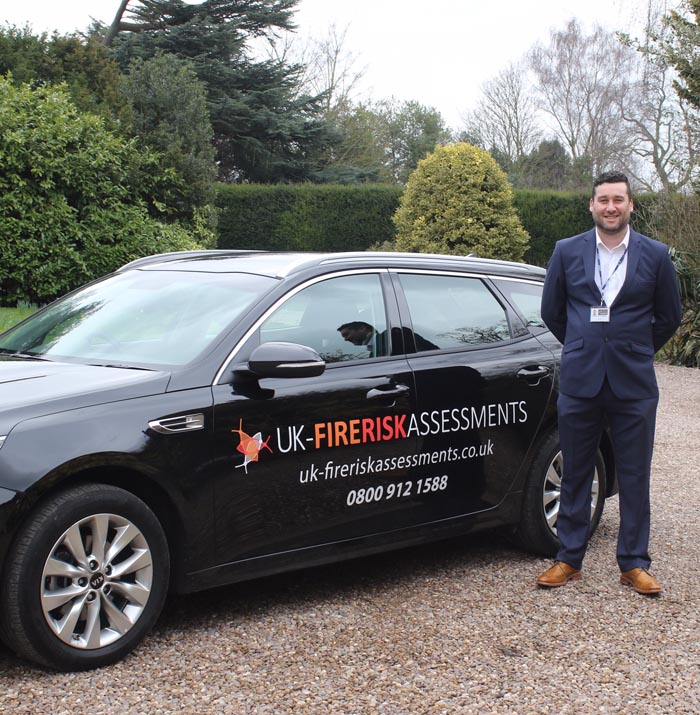Undertaking a fire risk assessment is a legal requirement for any person who is a building owner, landlord, occupier, employer, or anyone else with control of a building – for instance, a managing agent or building manager. As far as the law is concerned, such a person is known as the “responsible person” under the Regulatory Reform (Fire Safety) Order 2005.
In most cases, it will be obvious who the responsible person is, but it is quite possible for there to be more than one responsible person in which case they must work together in order to comply with the law. There may be cases where equipment is shared, such as fire extinguishers and a fire alarm system in a building occupied by several different businesses. It is also permissible for the responsible person to delegate the position to someone else, such as a senior employee, for example, or professional fire assessors such as ourselves at UK-Fire Risk Assessments.
Indeed, many people do prefer to have their fire risk assessment report undertaken by us for the simple reason that they can be extremely complicated if you don’t know what to look for. It is probably true that the majority of responsible persons are simply not qualified to undertake a fire risk assessment, not because they are incompetent individuals, but because they simply have not had appropriate training and would therefore miss things. When you use us you can be certain that we will not miss a trick, and you will also receive the written report that the law requires you to maintain if you have five or more employees. In fact, we provide one to every client, regardless of the number of employees.
The main rules under the Fire Safety Order are that you must carry out a fire risk assessment to identify any possible risks or dangers. You have to consider who may be especially at risk, such as the elderly or infirm. You need to remove or reduce the risk: for instance, it may not be possible to remove flammable materials used in a manufacturing process, but they must be stored safely and out of harm’s way as far as possible. There should be general fire precautions to handle any risk still remaining. You need to create a plan to deal with any emergency.
You also need to train staff on how to handle an emergency. If required, which it is in most cases, you need to keep a written record of your findings and any actions are taken or to be taken as a result. You also need to review your assessment on a regular basis: there is no legal timeline here, but most people consider an annual review acceptable. However, a review must also be carried out when any changes are made to working practices, equipment, or the building itself.
In addition, you must make certain that anyone on the premises is able to escape if there is an emergency. This is different from previous regulations in that it includes anyone who may be on the premises whether they are employees, visitors, or members of the public.
When identifying hazards, you need to consider sources of ignition such as naked flame, heaters, or certain commercial processes. There could be sources of flammable materials such as display materials, textiles, or simply the products that you produce. Oxygen sources such as air conditioning or medical equipment must be considered.
In addition, you need to consider people working near to or with flammable materials, people working alone – such as in a stockroom, children, parents with babies, people who are elderly or disabled and may need special help.
You must also have suitable fire detection and warning system which is capable of warning people in all circumstances. You will need to have suitable fire extinguishers and there should be at least one on each floor, and as a rule of thumb, one for every 200 square metres of premises.
There is also a lot to consider regarding safe exit from the premises in case of fire. Ideally, there should be more than one escape route, but this is not always possible. There are a lot of recommendations regarding distance to escape doors and so on.
In addition, there are other things that you may need such as emergency lighting, escape route signs, management of your fire safety systems, and staff training, which must be carried out during working hours.

